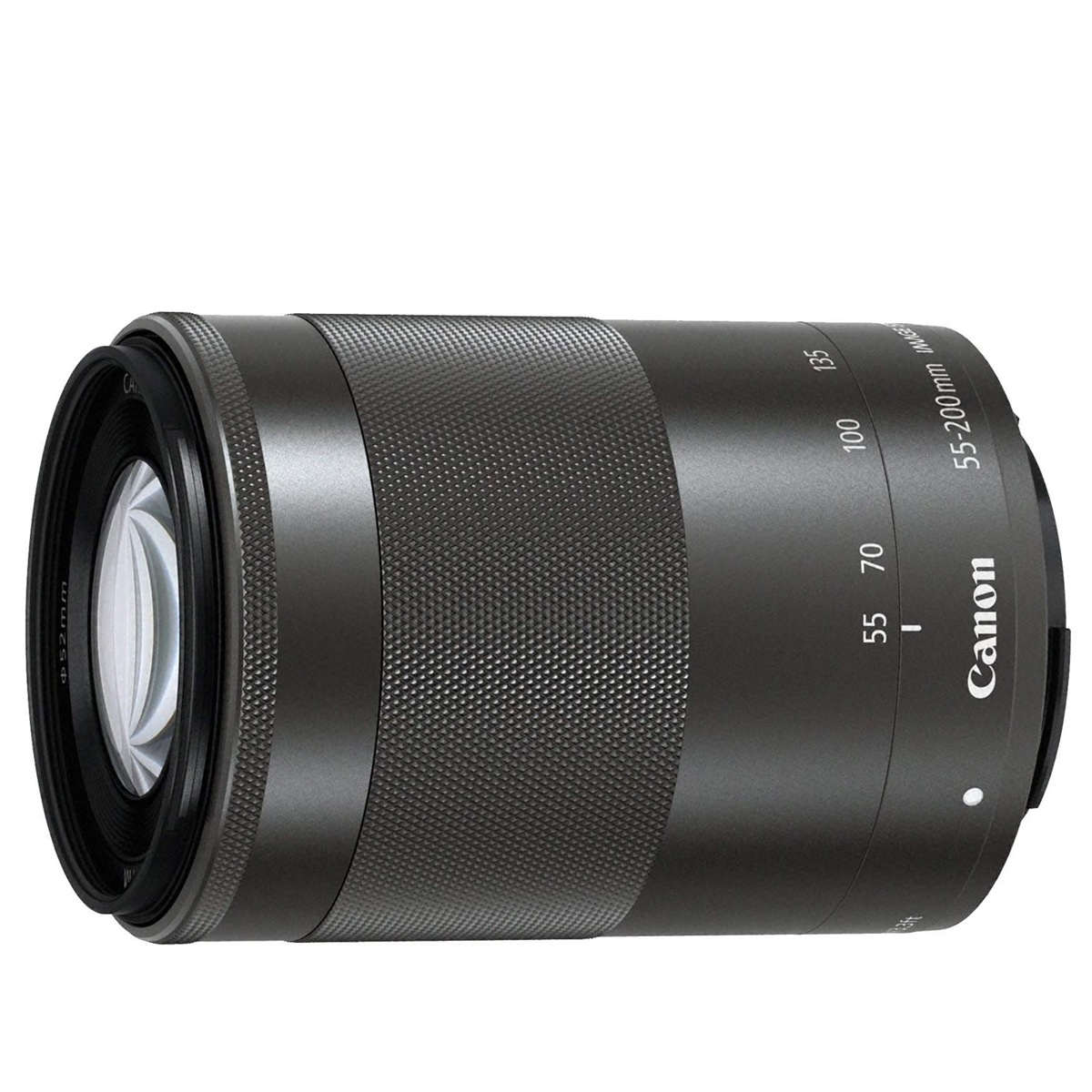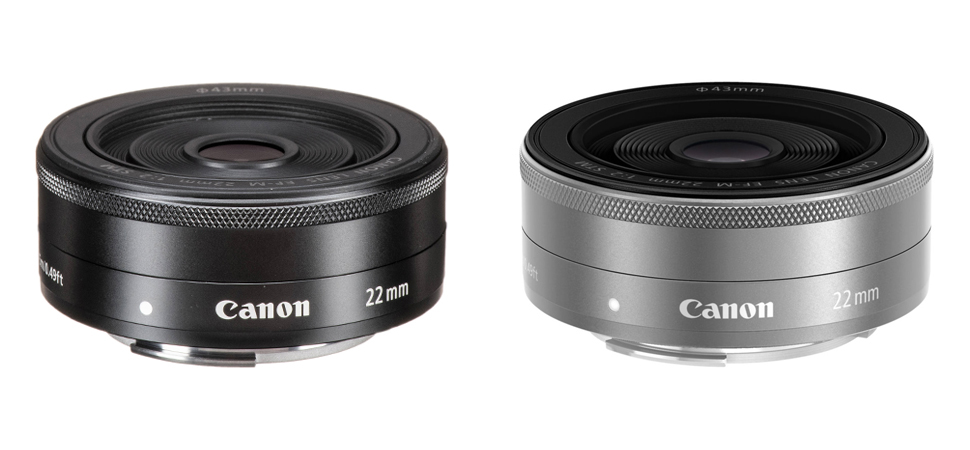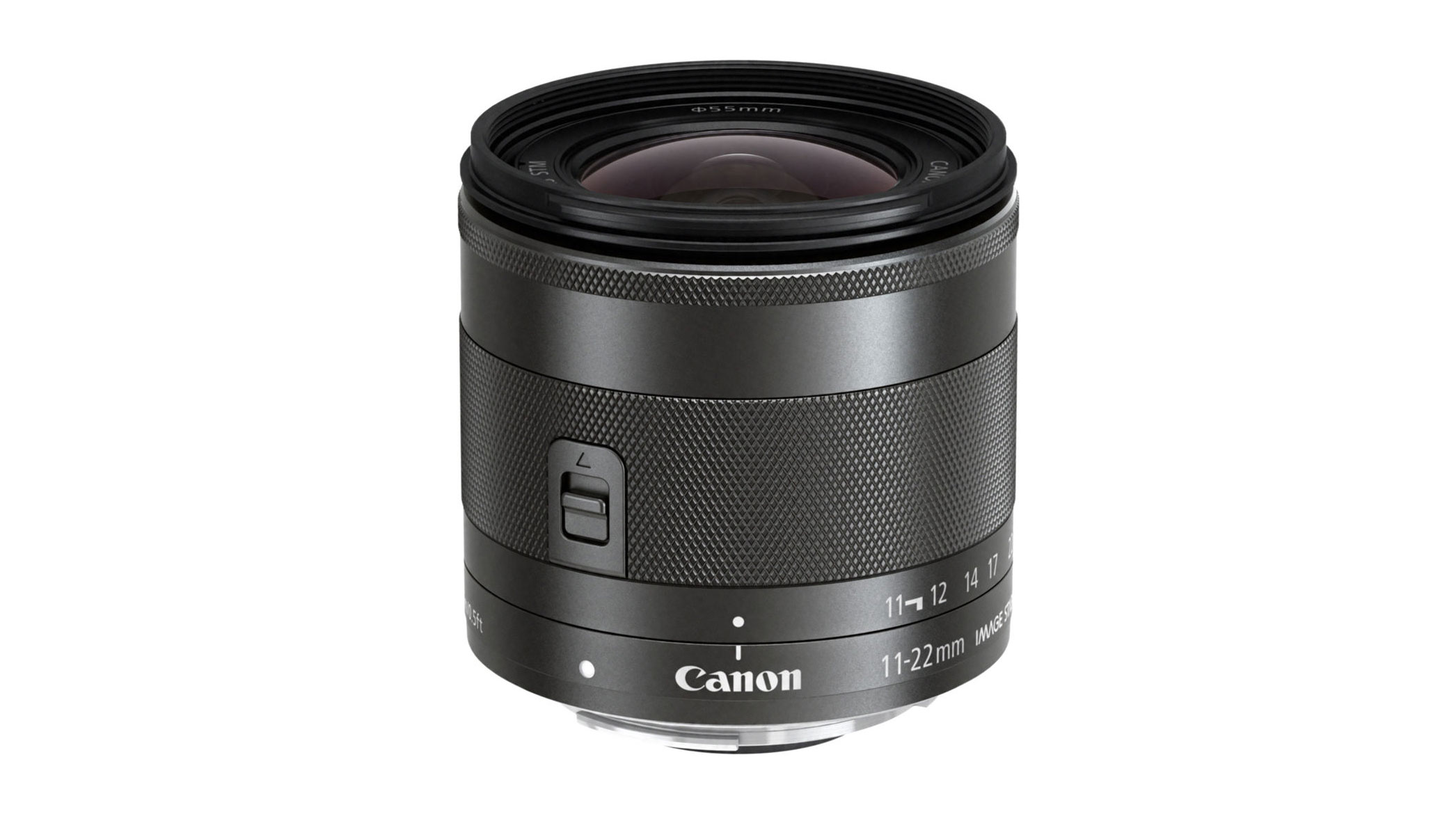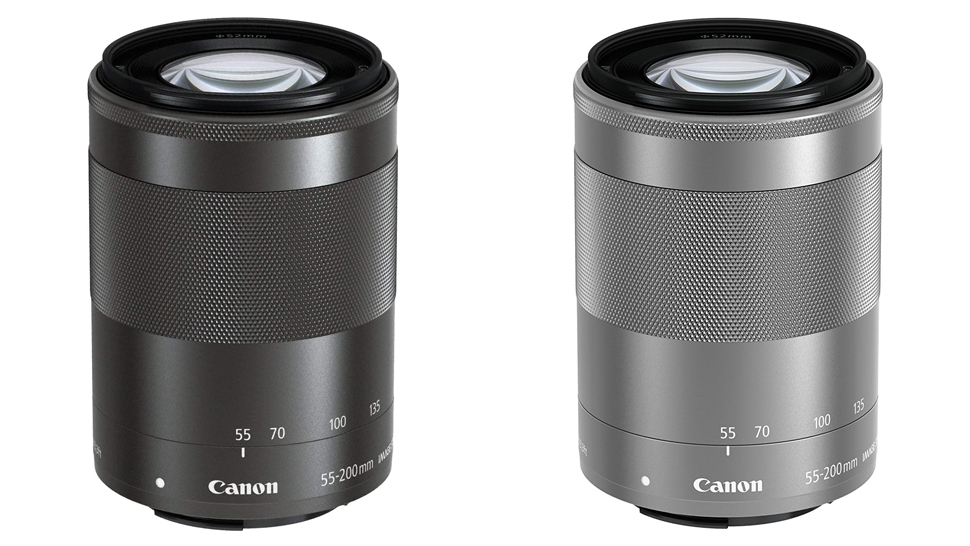The best Canon EF-M lenses: my top choices for EOS M system cameras
These are my top Canon EF-M lens picks for the EOS M50 & M50 Mark II, M6 & M6 Mark II, M5, M100 and M200

The best Canon EF-M mount lenses pair perfectly with EOS M system cameras. I've owned some of these cameras and lenses in the past and have always felt that Canon's lightweight APS-C mirrorless system has a lot to offer. From casual photographers to seasoned content creators, there are a fair few lenses out there to choose from.
I like that you're not just limited to Canon's own glass, as third-party manufacturers also make some of the best Canon EF-M lenses. That means that there are plenty of independent options which can sometimes offer great value for money.
The key draws of the EOS M system are its light weight and high speed. All the cameras in the range, from the ultra-popular Canon EOS M50 Mark II to the flagship Canon EOS M6 Mark II, are portable enough to take everywhere while still offering the level of focusing and shooting speed needed to capture the moment.
Lens choice therefore should reflect that, and Canon has done a good job with the EF-M lenses that are available. To put it in perspective, put the EF-M 15-45mm, 55-200mm and 11-22mm lenses in a bag with an EOS M camera and you'll have a setup that weighs about the same combined as Sigma's full-frame 24-70mm f/2.8 Art lens does on its own. So, here are my picks of the best Canon EF-M lenses you can buy right now…

Matthew Richards is a photographer and journalist who has spent years using and reviewing all manner of photo gear. He is one of Digital Camera World's principal lens reviewers, with an extensive pedigree in testing optic performance in real-world situations. His expertise with equipment doesn’t end there, though. He is also an encyclopedia when it comes to all manner of cameras, camera holsters and bags, flashguns, tripods and heads, printers, papers, and inks, and just about anything imaging-related.
The Quick List

This is often offered as the kit lens with an EOS M camera, and it’s an ideal walkabout lens for general shooting. Read more below…

This lens’s retractable design makes it much smaller than a typical wide-angle zoom, and it’s a very capable choice. Read more below…

If you want the very best image quality for your landscapes and architecture, this prime will really deliver. Read more below…

On an EOS M camera, this prime gives you a classic street photography perspective, and it’s very unobtrusive. Read more below…

This feels a lot like shooting with a ‘nifty fifty’, while the fast aperture means you can keep snapping as it gets dark. Read more below…

This lightweight lens gives you a finely tuned balance between traveling light and getting close to the action. Read more below…
View the full list ⤵

Get ready to capture shots of epic proportions with a 115-degree viewing angle – as long as you don’t mind manual focus. Read more below…

A powerful macro lens with built-in lighting. It's been discontinued but makes a great used buy. Read more below…
Best Canon EF-M lenses in 2025
Why you can trust Digital Camera World
Best everyday lens for EOS M cameras

1. Canon EF-M 15-45mm f/3.5-6.3 IS STM
Our expert review:
Specifications
Reasons to buy
Reasons to avoid
Typical of Canon’s EF-M lenses, this one is available in black (graphite, to be exact), but you can also buy it in silver. It replaces Canon’s older EF-M 18-55mm as the standard zoom of choice. With a clever retractable design, it’s both smaller and lighter than the original lens, and has the bonus of a significantly greater maximum viewing angle. That’s because the ‘effective’ focal length at short end of the zoom range shrinks to 24mm rather than 29mm, thanks to the 1.6x crop factor. However, telephoto reach isn’t quite as generous as in the original 18-55mm zoom.
Unlike a number of retractable standard zooms from competing camera manufacturers, the EF-M 15-45mm has a manual rather than motorized zoom ring. It’s arguably less convenient when shooting movies but enables greater precision when making adjustments for stills. Image quality is very good and the 3.5-stop optical image stabilizer is a bonus for handheld shooting. Overall, it’s the perfect standard zoom for any EOS M camera, and is often offered as the kit lens.
Read more: Canon EF-M 15-45mm f/3.5-6.3 IS STM review
Best wide-angle zoom for EOS M cameras
2. Canon EF-M 11-22mm f/4-5.6 IS STM
Specifications
Reasons to buy
Reasons to avoid
You’d typically expect a wide-angle zoom to be quite big and heavy, but the EF-M 11-22mm uses a retractable design that keeps it small enough to fit in a jacket pocket. It’s still solidly built, with a metal mounting plate.
Image quality is very decent, roughly the same as in the EF-M 15-45mm and 55-200mm lenses from the same range, although the image stabilization system is rated slightly lower, with a 3-stop effectiveness.
Best wide-angle prime for EOS M cameras
3. Sigma 16mm f/1.4 DC DN Contemporary
Our expert review:
Specifications
Reasons to buy
Reasons to avoid
Compared with most own-brand Canon EF-M lenses, this Sigma is comparatively weighty at 405g. Even so, considering its combination of a 16mm focal length (25.6mm ‘effective’ in full-frame terms) and a fast f/1.4 aperture rating, it’s still remarkably small and light, typical of Sigma’s ‘Contemporary’ line-up of lenses.
When I reviewed the Sigma 16mm f/1.4 DC DN | C, I was really impressed by its quality, inside and out. Build quality is very good indeed, with a sturdy metal mounting plate and smooth-action focus ring, electronically coupled to a fast and near-silent stepping motor autofocus system. The complex optical path includes three top-grade FLD (‘Fluorite’ Low Dispersion), two SLD (Special Low Dispersion) and two glass moulded aspherical elements, all of which work together to deliver sumptuous image quality.
Typical of ‘fast’ f/1.4 lenses, there’s no optical image stabilizer but it’s a superb wide-angle prime that’s tremendous value at the price, and arguably the best lens you can buy for your EOS M system.
Read more: Sigma 16mm f/1.4 DC DN | C review
Best street photography lens for EOS M cameras

4. Canon EF-M 22mm f/2 STM
Our expert review:
Specifications
Reasons to buy
Reasons to avoid
35mm is seen by many photographers as the most ideal focal length for street photography. When you take the crop factor of EOS M image sensors into account, the EF-M 22mm gives an effective focal length of 35.2mm; together with satisfying image quality, that makes it the obvious choice for street shoots with an EOS M camera.
You won’t draw attention to yourself using this lens, either. It uses a pancake design that keeps it very small and light, while the autofocus system is extremely quiet too. The wide f/2 aperture means the lens keeps delivering great shots as the light dims.
Read more: Canon EF-M 22mm f/2 STM review
Best standard prime for EOS M cameras
5. Canon EF-M 32mm f/1.4 STM
Specifications
Reasons to buy
Reasons to avoid
With an ‘effective’ focal length of 51.2mm, the experience of using this lens on an EOS M camera is similar to using a ‘nifty fifty’ on a full-frame camera – a classic viewing angle. The fast f/1.4 aperture enables you to create plenty of background blur in shots to isolate subjects, and it helps in low-light situations too. And while the lens doesn’t offer the magnification of a true macro lens, it does get close enough and big enough to do in a pinch, with a 0.25x magnification ratio and a minimum focus distance of just 23cm. The fast, quiet autofocus system just adds to the hit list.
Best telephoto lens for EOS M cameras
6. Canon EF-M 55-200mm f/4.5-6.3 IS STM
Our expert review:
Specifications
Reasons to buy
Reasons to avoid
Measuring 61x87mm and weighing a mere 260g, this is a surprisingly light and compact telephoto zoom. As you’d expect, the physical length of the lens extends at longer zoom settings but, overall, it’s a very easy lens to live with.
The ‘effective’ zoom range in full-frame terms is 88-320mm which is very useful, even if it doesn’t give as much telephoto reach as, say, Canon’s EF-S 55-250mm lens for APS-C format SLRs. Ultimately, this EF-M lens is an ideal compromise between compact build and telephoto power.
Read more: Canon EF-M 55-200mm f/4.5-6.3 IS STM review
Best ultra wide-angle for EOS M cameras
7. Laowa 9mm f/2.8 Zero-D
Our expert review:
Specifications
Reasons to buy
Reasons to avoid
This Laowa lens is a distinctive proposition for when you want to capture the most epic of views. On an EOS M camera, it offers an effective focal length of 14.4mm, and an ultra-wide 115-degree viewing angle. Despite that, the lens distortion is so tiny that straight lines remain straight, making this a compelling option for architecture and interiors.
You have to be comfortable with manual focusing to use this lens, because there’s no autofocus system; you also have to adjust the aperture manually using a smooth control ring. But the handling is so pleasant that this won’t feel like a chore, and the quality of the images is well worth it.
Read more: Laowa 9mm f/2.8 Zero-D lens review
Best macro lens for EOS M cameras
8. Canon EF-M 28mm f/3.5 Macro IS STM
Our expert review:
Specifications
Reasons to buy
Reasons to avoid
Canon’s EF-M macro lens has a 28mm focal length, which is very short indeed by macro lens standards. It means you have to get very close, just 13mm away, to your subject to achieve maximum magnification, which is rated at an impressive 1.2x compared with lifesize.
Such close proximity probably means some ambient light will get blocked, but the lens has a built-in light to compensate. It also features a ‘hybrid’ image stabilizer that is better-suited to close-up shooting than a typical IS system, although it’s still advisable to use a tripod if possible.
The lens’s effective focal length on an EOS M camera is 45mm, which means it’s useful for general-purpose shooting when you’re not targeting tiny subjects. It's now been discontinued but, if you can't find any new ones for sale anywhere, it makes a smart second-hand buy.
Read more: Canon EF-M 28mm f/3.5 Macro IS STM review
Lab data and comparisons
The graphs below show the comparative performance of the lenses in this guide, based on our in-house lab tests. We don't have data for all of the lenses, but the graphs are based on all of the ones that have been through our lab. The Sigma 16mm f/1.4 DC DN | C prime leads the way for sharpness and the Canon primes edge ahead of the zooms. The Sigma lens is the least impressive for control over distortion but automatic in-camera correction is available.
Scores for sharpness and color fringing are averaged from data taken across the entire image frame, from the center to the edges and corners, throughout the aperture range. For zoom lenses, the scores are also averaged from data measured at all marked focal lengths, and the same applies to distortion. Bear in mind that these average values don't fully reflect specific areas of performance. For example, a zoom lens might have noticeable barrel and pincushion distortion at its shortest and longest focal lengths respectively, which tends to average out when looking at the data overall. For more detailed graphs of each lens's performance, which give the full picture, check out the graphs in our full standalone lens reviews.
How to choose the best lens for EOS M cameras
Which lenses fit EOS M cameras?
EOS M cameras use the Canon EF-M mount, and are compatible with all lenses designed for that mount. Canon’s own EF-M mount lenses include EF-M in the name of the lens; check that third-party lenses are compatible with EF-M before you buy.
You can also use Canon EF and EF-S lenses on EOS M cameras if you buy the Canon Mount Adapter EF-EOS M.
RF and RF-S lenses designed for Canon R-series cameras are not compatible with EOS M cameras.
If you later buy either a Canon DSLR or a Canon R-series mirrorless camera, your EF-M lenses will not be compatible with your new camera.
How do I know which lens to get for my EOS M camera?
The reason there are so many types of lens in the first place is that different scenes demand different lens designs, particularly when it comes to focal length and aperture rating.
Usually, you will decide what you want to photograph, then get a lens with the focal length that suits the situation. For example, to shoot landscapes you will need a wide-angle lens, while for sports and wildlife you will need a telephoto.
You can watch this video that explains focal length: it helps you work out what kind of lenses you need for different genres of photography.
How we test lenses
The lens experts in our testing lab run a range of tests under controlled conditions, using the Imatest Master testing suite. Photos of test charts are taken across the range of apertures and zooms (where available), then analyzed for sharpness, distortion and chromatic aberrations.
We use Imatest SFR (spatial frequency response) charts and analysis software to plot lens resolution at the centre of the image frame, corners and mid-point distances, across the range of aperture settings and, with zoom lenses, at four different focal lengths.
There's more to it than just the technical side, though! Beyond the lab, our reviewers test lenses in real-world environments – and sometimes on professional shoots! We work with lenses both indoors and outdoors, in studio conditions and in natural light, with as many different subjects as is possible (or appropriate – there's no point testing a landscape lens' ability to shoot a portrait!).
We take into account everything from handling and ease of use to speed of autofocus and the overall quality of the images produced.
Find out more about how we test and review on Digital Camera World
The best camera deals, reviews, product advice, and unmissable photography news, direct to your inbox!
Matthew Richards is a photographer and journalist who has spent years using and reviewing all manner of photo gear. He is Digital Camera World's principal lens reviewer – and has tested more primes and zooms than most people have had hot dinners!
His expertise with equipment doesn’t end there, though. He is also an encyclopedia when it comes to all manner of cameras, camera holsters and bags, flashguns, tripods and heads, printers, papers and inks, and just about anything imaging-related.
In an earlier life he was a broadcast engineer at the BBC, as well as a former editor of PC Guide.
- James ArtaiusEditor in Chief







